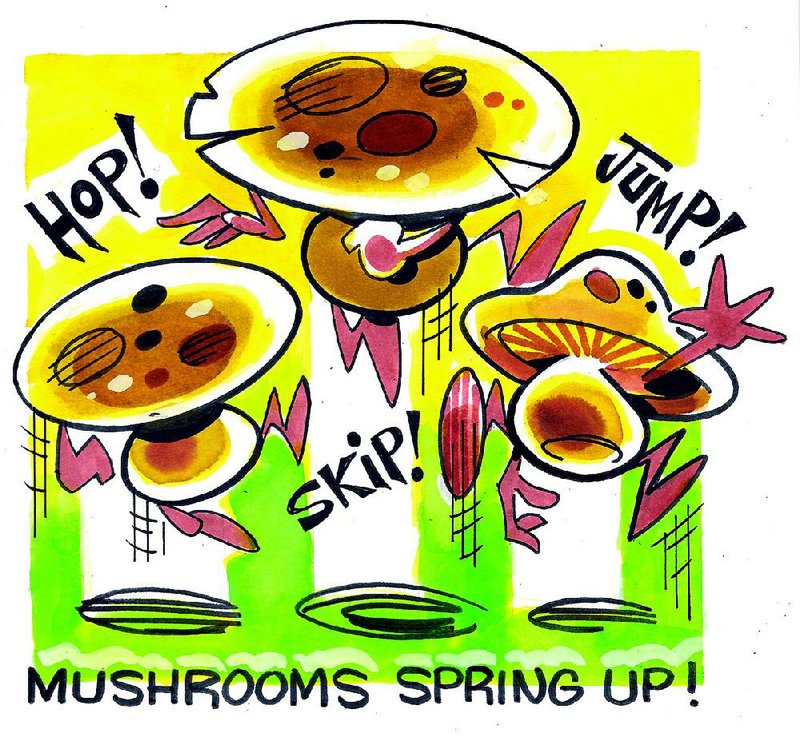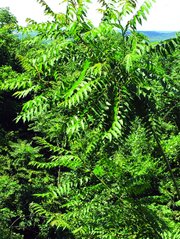Q We are plagued by mushrooms around an old hackberry tree stump. They spring up overnight about every two weeks. They smell and attract insects, plus the black slime discolors flowerpots, etc. We've tried vinegar, salt, spraying -- nothing seems to work. They die and dry up after a few days, but then they are back again. Any suggestions?
A You are probably going to have this problem for the next year or two. You have a lot of decaying roots and organic matter from that hackberry tree you removed, which the mushrooms are feeding on. With ample moisture the spores sprout and the mushrooms appear. I get quite a few different mushrooms in my compost. As I see them, I put on gloves and remove them and dispose of them. Over time, they will wear out. Hot, dry conditions are also not as favorable to mushroom growth. Some people recommend fungicides, but I haven't seen much effectiveness with them. Probably not the news you wanted, but short of digging up the stump and all the surrounding roots, there isn't much more you can do.
Q Would you know what this plant/tree is? It must be perennial as it dies back in winter and reappears in May. They are in a wooded area about a mile up from the Arkansas River.
A It is commonly called tree of heaven (Ailanthus altissima). The deciduous tree is native to China and was introduced to this country in 1784 as an ornamental in Philadelphia. Today it has naturalized and has become quite invasive. There are separate male and female trees, with the female trees being prolific seeders with the potential to produce more than 300,000 seeds annually. They also have a deep root system and can send up suckers.
Q Help! Our phlox is dying. It started turning brown at the base and worked its way up. The stems are growing very tall as well.
A Phlox can suffer from several diseases from root rot to powdery mildew. Heavy soils, planting too close together or overwatering all lead to problems. Tall, thin plants can be caused by lack of sunlight. Take a sample of your phlox with some pictures to your local county extension office. If they cannot diagnose the problem, they can send it to the disease diagnostic lab.
Q Seven years ago I replanted a leaf of Mom's hydrangea bush from my home place in water. Then I planted it in the ground. It has only bloomed one time and yet is a beautiful, healthy looking green bush. Could you tell me what the problem might be?
A There are several reasons for lack of blooms on big leaf hydrangeas (Hydrangea macrophylla). Old-fashioned big leaf hydrangeas bloom on the old wood, which means they set their flower buds before they go dormant in the fall. If they are pruned in the fall or early spring, the flower buds are being removed. If the plants are frozen back to the ground by a cold winter or late freeze, they also lose their flower buds. The last factor can be lack of sunlight. Hydrangeas do best with full morning sun or filtered sun, with no direct afternoon sun. Deep shade will give you a green bush but no flowers.
Q I don't remember the real name of the seeds that I have had for years. I know it's supposed to attract hummingbirds. I planted them all in one planter since I was not sure any would come up. Well, a lot did! Now I'm not sure whether I can thin them out and replant some in different containers. Your thoughts, please.
A The plant in question is commonly called cypress vine (Ipomoea quamoclit). It is an annual vine in the morning glory family with pretty red flowers that do attract hummingbirds. I would definitely thin them out and maybe share with friends. Some gardeners find them to be invasive, as they can reseed. Soil quality is a big factor in how well they come back.
Janet B. Carson is a horticulture specialist for the University of Arkansas Cooperative Extension Service. Write to her at 2301 S. University Ave., Little Rock, Ark. 72204 or email her at
jcarson@arkansasonline.com
HomeStyle on 06/16/2018

